SynVivo 血管微环境模拟系统
仪器名称: |
SynVivo 血管微环境模拟系统 |
英文名称: |
SynVivo |
国产/进口: |
进口 |
产地/品牌: |
美国/SynVivo |
型号 : |
SynVivo |
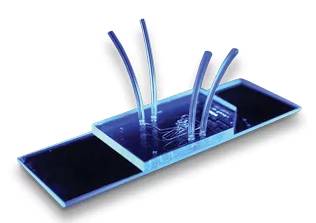
SynVivo是一款模拟体内血管环境的微流体芯片,可以模拟仓鼠、大鼠和小鼠的不同血管。提供形态和生物学的仿真微环境,
可以对药物等微粒与细胞的相互作用进行实时观察研究,其中一些te殊芯片可以培养te定组织类型的细胞,如神经元、
肝细胞或肿瘤细胞等。
SynVivo在体外条件下,利用微循环网络模拟在体条件下细胞/微粒粘附、细胞-细胞或细胞-微粒相互作用。研究流体和
形态对药物研发和细胞研究的影响.。得到剪切力-粘附效应图,分叉与分支粘附效应等。研究人员只需用适当的
底物覆盖微芯片的通道(如纤连蛋白),然后在其中培养细胞,就可以建立人工的体内环境。这一系统可通过流动的
液体来模拟天然的血液。
SynVivo在细胞行为、药物粒子粘附和吸收机制、药物输送、药物发现、药物毒性分析等领域有广泛应用。
The SynVivo platform can support custom assays based on your research application. Don’t see a catalog assay for your biological question? Want to perform your assay using a linear chip design? We can develop a custom assay kit for you using our library of chip designs- See more information in the following tabs.
- Linear Channels
- Bifurcating Channels
- Microvascular Networks
- Idealized Networks
Custom Designs – If you need a specialized microvasulature or other design we have the necessary equipment to fabricate most any design based on your research needs. Our engineers will work with you to help design the most relevant SynVivo channel or network configuration to help you achieve your research goals
Linear Channels
Linear Channels
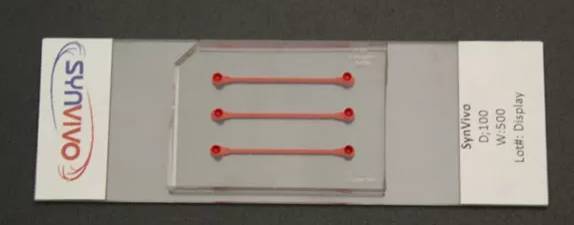
Use Linear Channels for studying cell/particle adhesion and cell-cell or cell-particle interactions at the micro-circulation scale. Use as a substitute for parallel plate flow chambers for >90% savings in consumables.
Linear Channels Design Library
Three channels per chip of various widths to allow you to study shear effects based on channel size and flow rates.
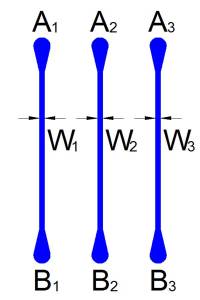
IMN1-LC
Standard Depth Options:
- 50 μm
- 100 μm
Standard Width Options (W1 / W2 / W3):
- 100 μm / 100 μm / 100 μm
- 250 μm / 250 μm / 250 μm
- 500 μm / 500 μm / 500 μm
- 100 μm / 250 μm / 500 μm
Custom designs/sizes also available.
Bifurcating Channels
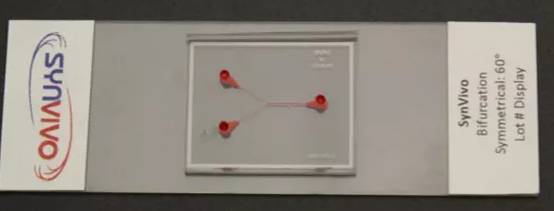
Use symmetric and asymmetric bifurcations to study cell/particle adhesion and cell-cell or cell-particle interactions at bifurcations and to study the effect of the bifurcation angle and asymmetry on adhesion. Compare adhesion in linear sections and bifurcations simultaneously.
Bifurcating Channels Design Library
With various options of symmetric and asymmetric bifurcating angles and parent/daughter channel widths you can likely find a set of designs to provide you the best models for your research.
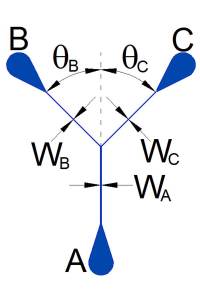
IMN1-BC
Standard Depth Options:
- 50 μm
- 100 μm
Standard Parent / Daughter Width (WA) / (WB + WC) Options:
- 100 μm / 50 + 50 μm
- 100 μm / 20 + 80 μm
- 100 μm / 33 + 67 μm
Standard Symmetric Bifurcation Angle (θB/θC) Options:
- 15° + 15°
- 30° + 30°
- 45° + 45°
- 60° + 60°
Standard Asymmetric Bifurcation Angle (θB/θC) Options:
- 6° + 24°
- 10° + 20°
- 15° + 75°
- 18° + 72°
- 30° + 60°
Custom designs/sizes also available.
Microvascular Networks
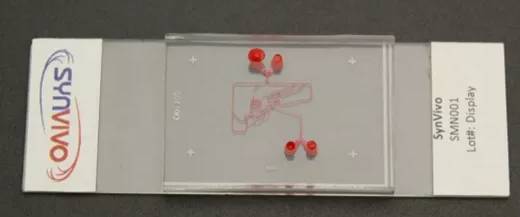
REQUEST A QUOTE
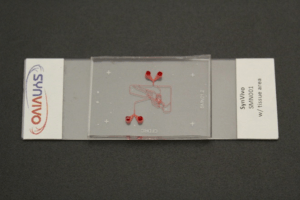 Use network co-culture assays to replicate the in vivo physiological and morphological conditions in addition to desired cellular makeup.
Use network co-culture assays to replicate the in vivo physiological and morphological conditions in addition to desired cellular makeup.
Co-Culture Network Design Library
By incorporating natural tissue regions within the network topology, the co-culture networks allow study of cell and drug behavior at and across the interfaces. The co-culture network constructs are available with several options for channel size, tissue region scaffolding, and barrier design. We can help you select the right parameters for your needs and can also construct custom designs if needed.
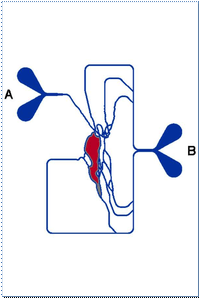
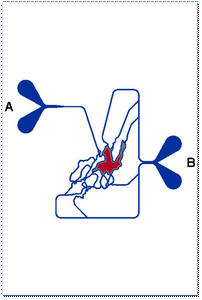
Idealized Networks
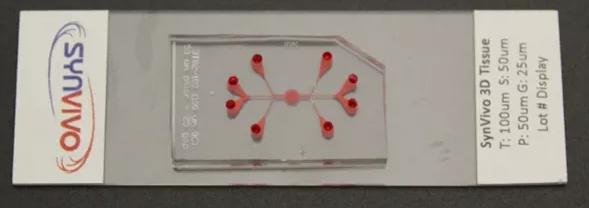
Use idealized co-culture assays to mimic the cellular make up in vivo. Investigate cell-cell interactions and perfusion vs. diffusion based affects. Analyze the experiments in real-time for all the cell populations.
Co-Culture Design Library
Intended to mimic the formation of and transport across tight and gap junctions such as the blood-brain barrier and other endothelial/tissue interfaces, the idealized co-culture constructs are available with several options for channel size, tissue chamber size and scaffolding, and barrier design. We can help you select the right parameters for your needs and can also construct custom designs if needed. Please contact us for details.
Slit Barrier Option
This device utilizes slits and gaps to form the barrier region between the outer channel and inner chamber.
Standard design parameters available are:
- Outer Channel Width (OC): 100 μm or 200 μm
- Travel Width (T): 50 μm or 100 μm
- Slit Spacing (SS): 50 μm or 100 μm
- Slit Width (WS): Variable
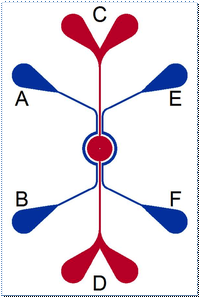
IMN2/IMN3 (Slits)
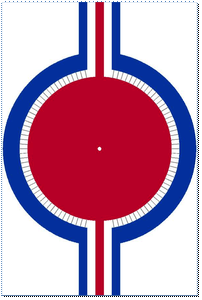
MN2/IMN3 Chamber Zoom
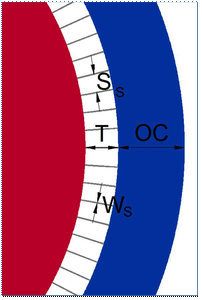
IMN2/IMN3 Slit Details


